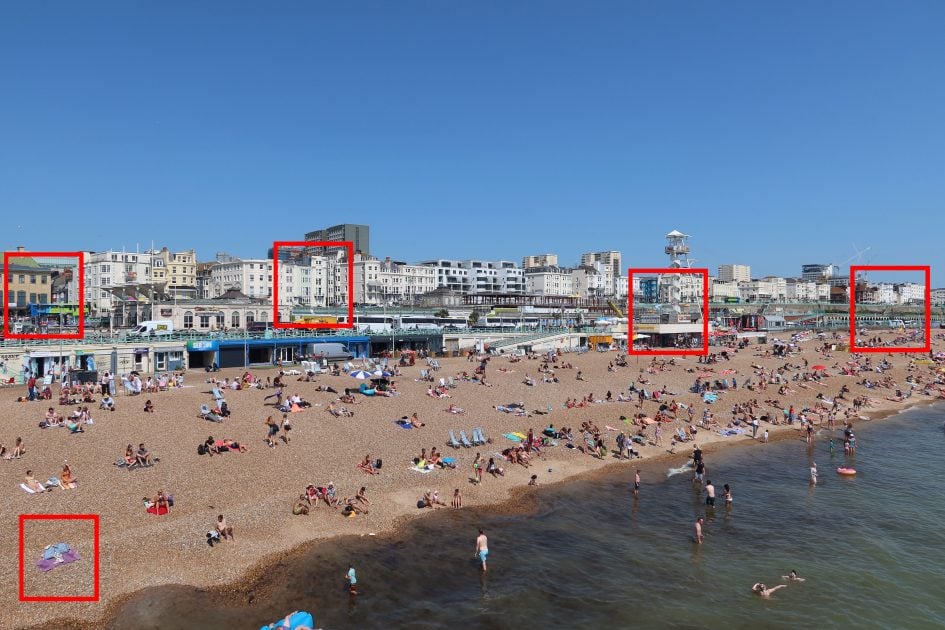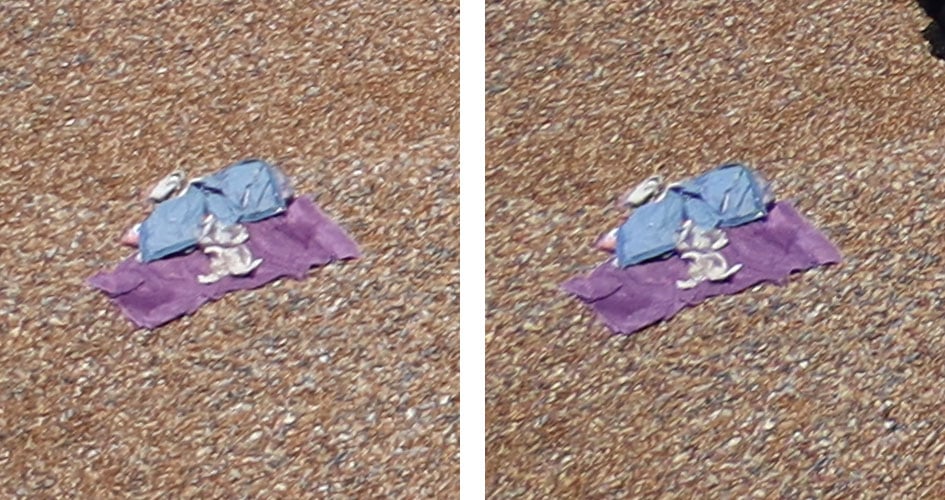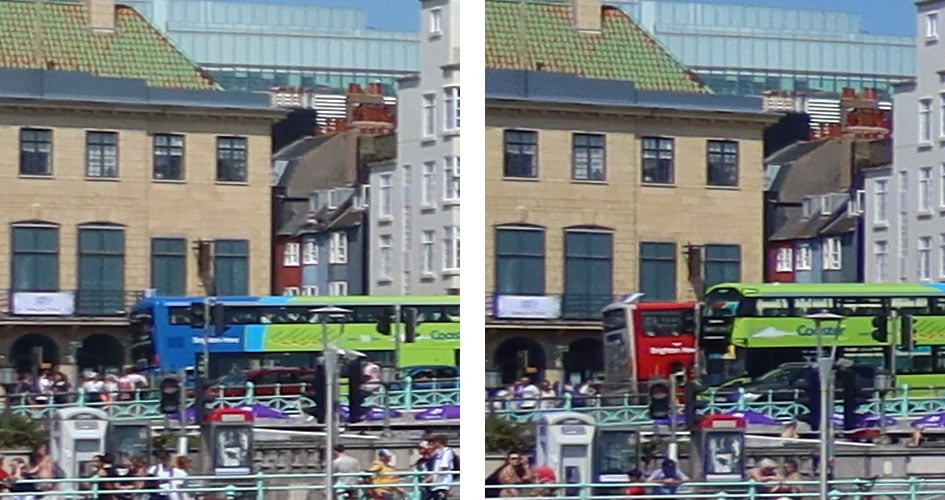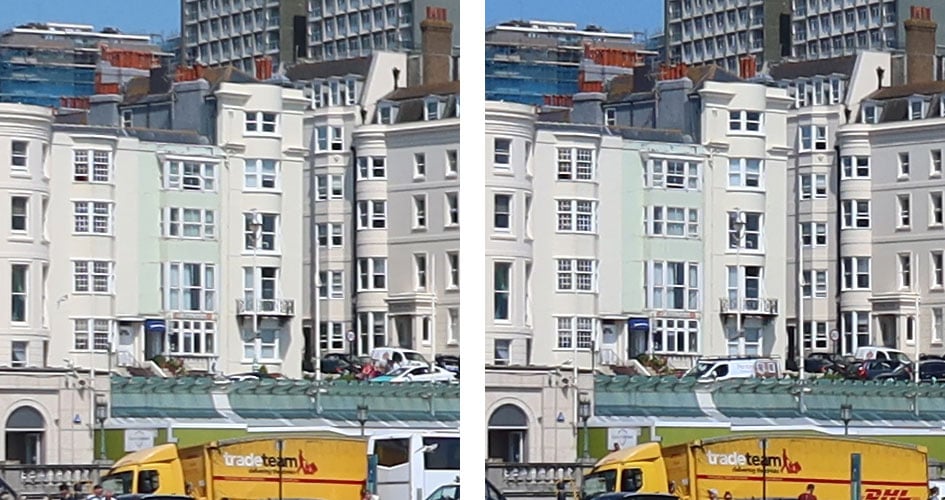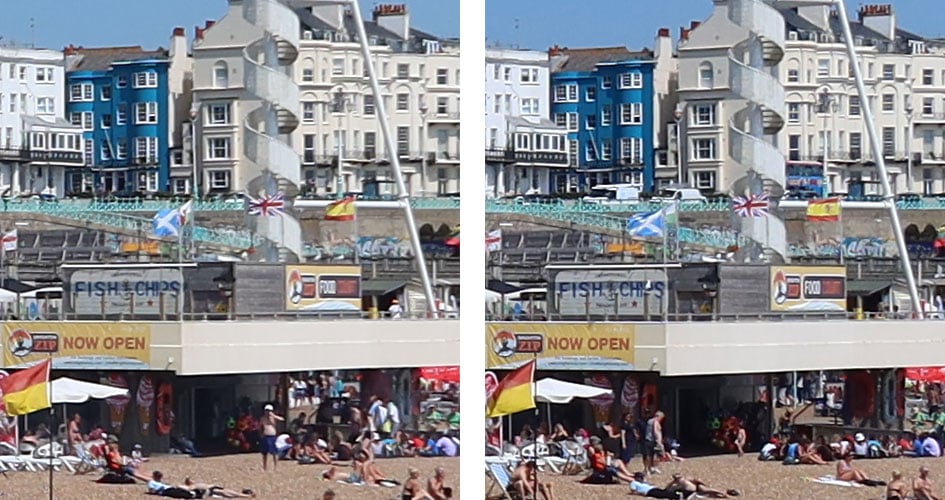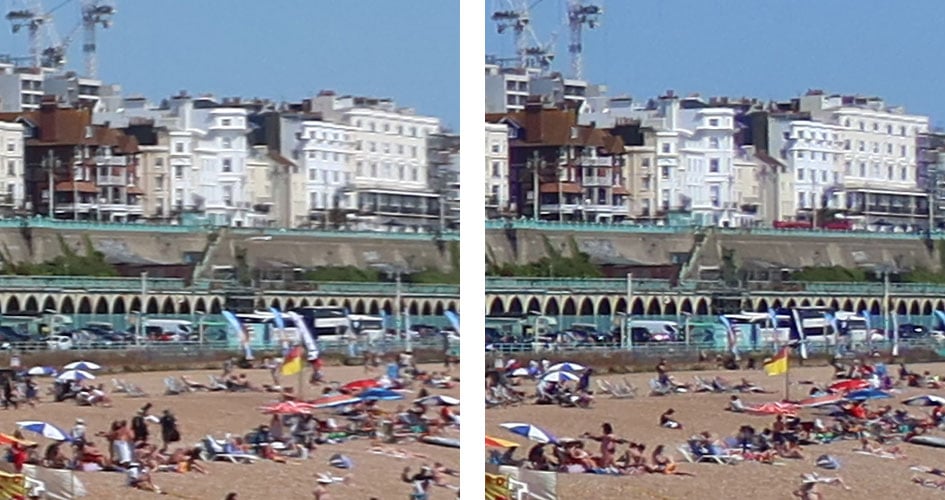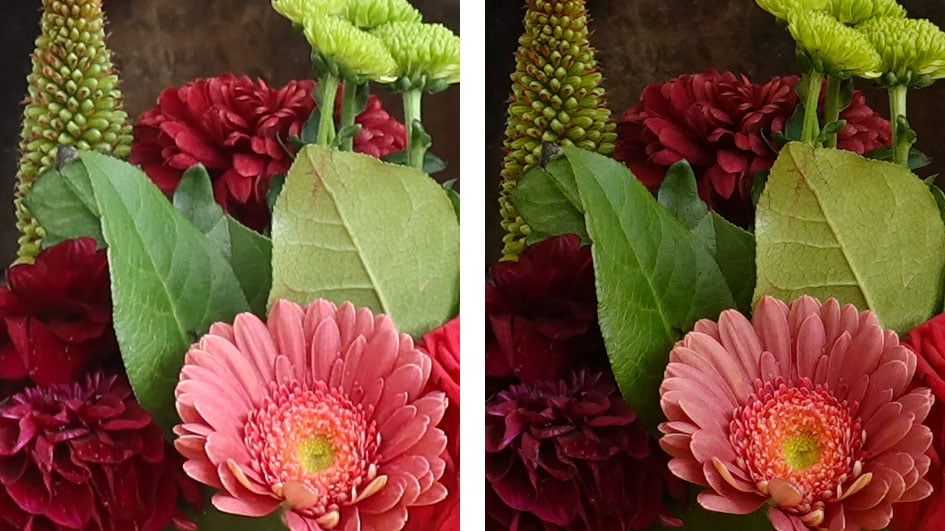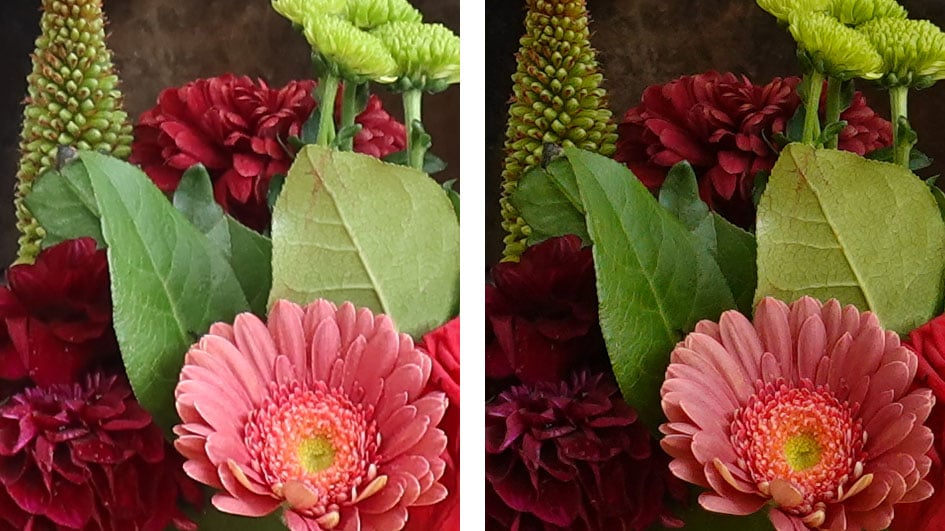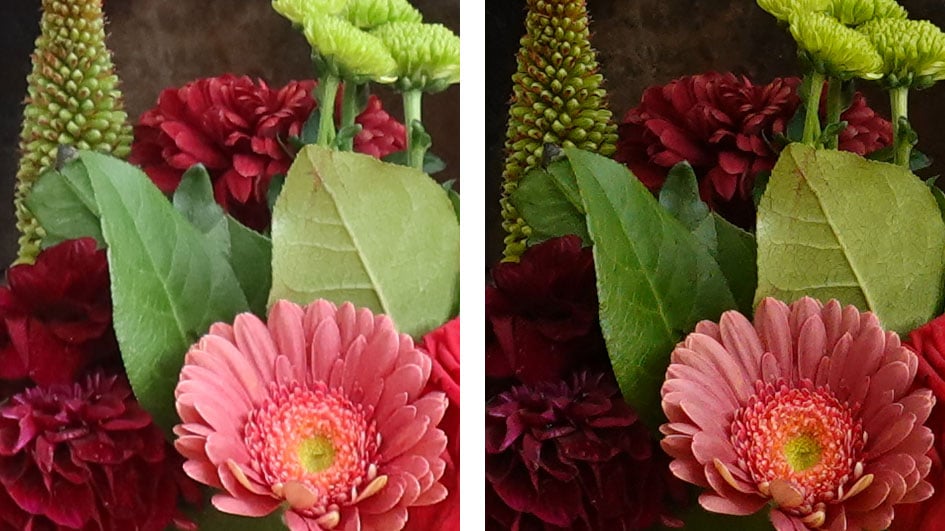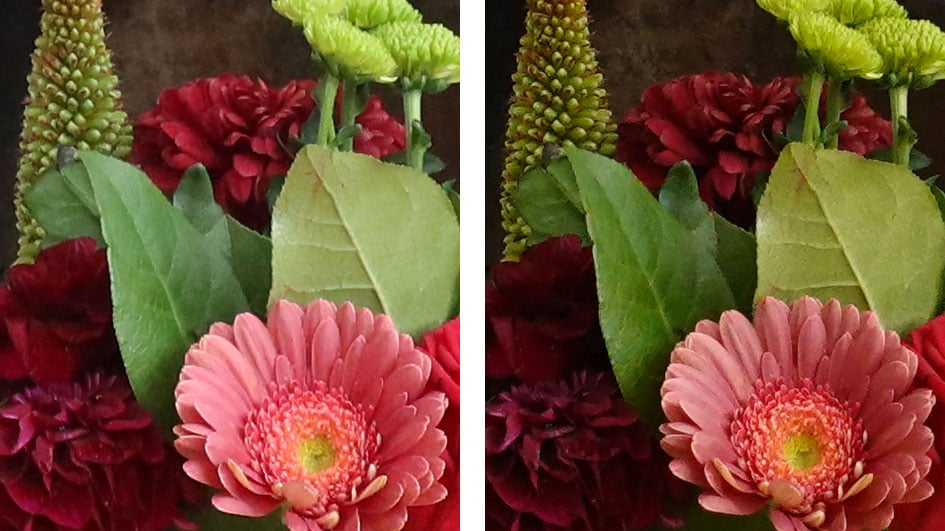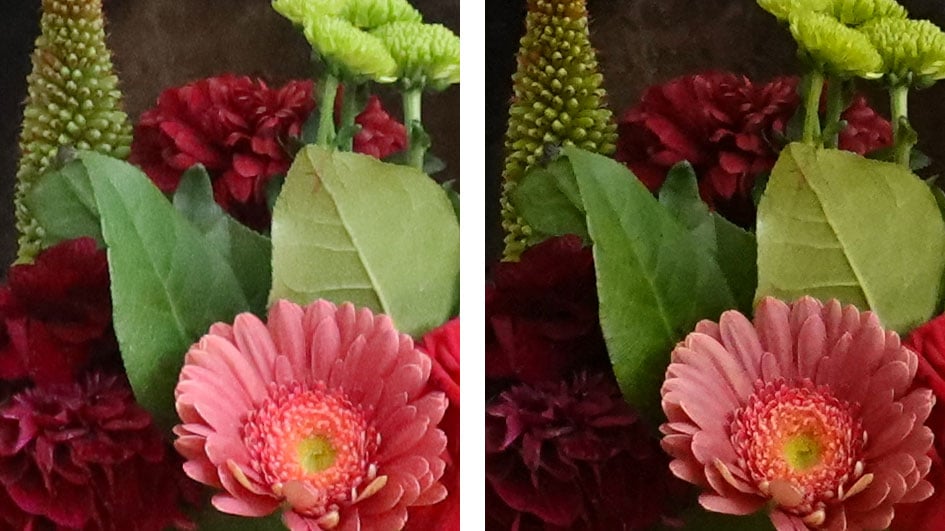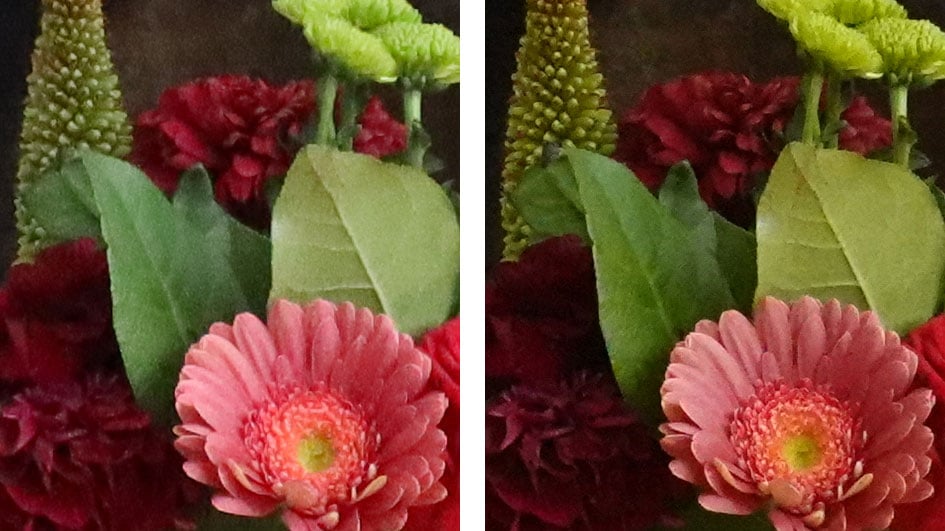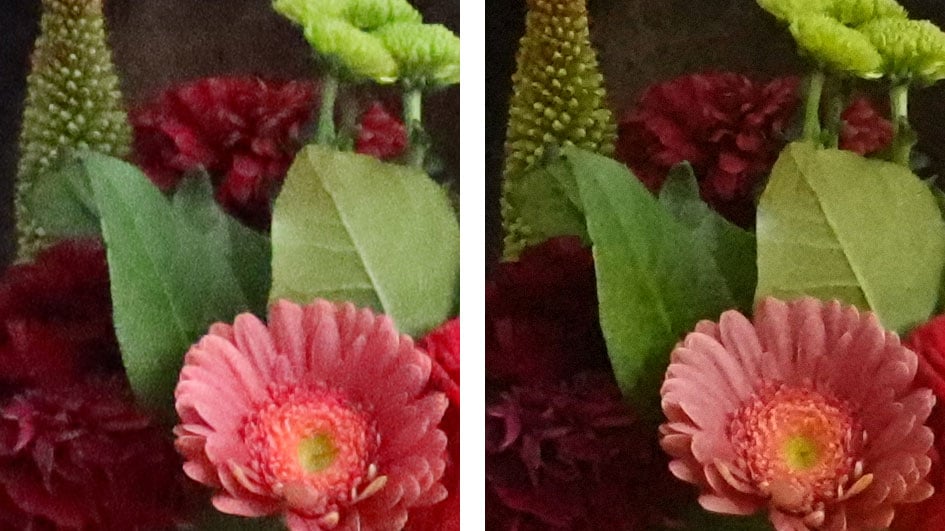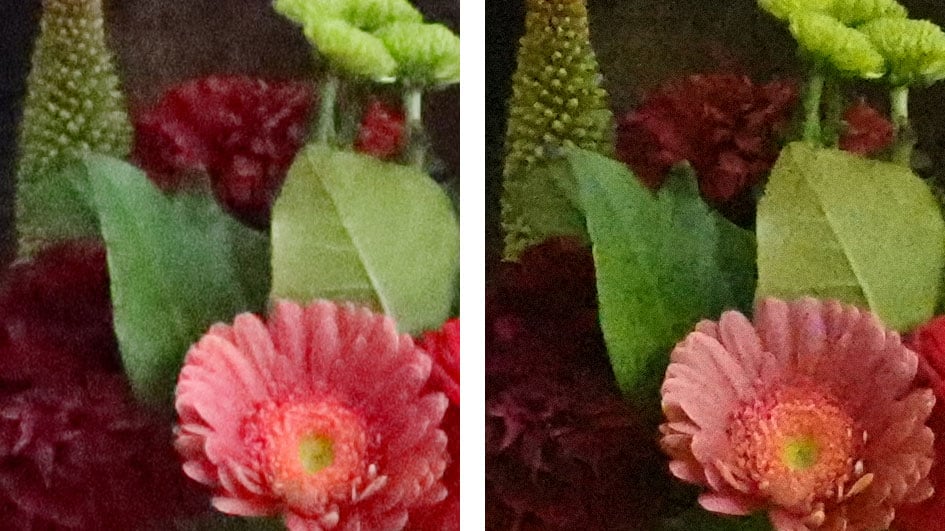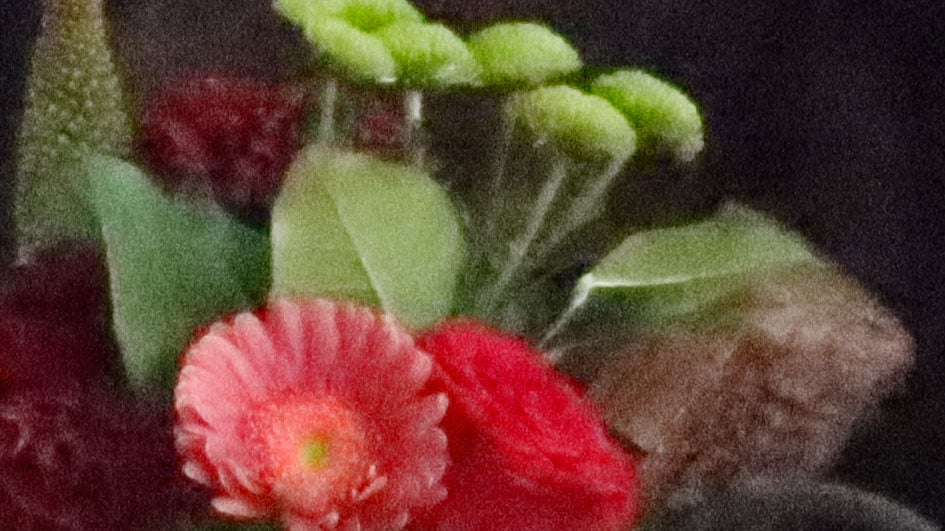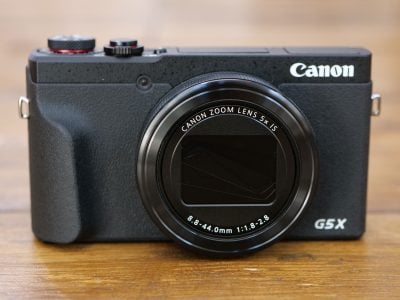Canon PowerShot G5X II review
-
-
Written by Gordon Laing
Quality
To measure the resolution between the G7X III and G5X II, I shot this scene with both cameras set to 24mm moments apart and at all aperture settings; I found . f2.8 and f4 to be the sharpest, with f4 being fractionally superior, so that’s what I’ve sued for comparison here. I shot in JPEG and RAW and hope to add a RAW comparison when the files are all supported by Adobe, but for now I’m presenting their out-of-camera JPEG quality, taking 100% crops from the areas marked by the red rectangle. If you’re interested in noise performance at high ISOs, scroll down to my second comparison.
As you can see from the crops below, the newer lens on the G5X II, seen in the right column, is delivering crisper results than the G7X III across the frame. They’re pretty close around the middle of the frame, but as you approach the corners or edges, the G5X II’s lens takes the lead. This was also reflected at longer focal lengths – close, but a visible lead from the G5X II, so not only does the G5X II boast a longer range and a closer focusing distance at the long-end, but its optics are also a little crisper across the frame.
Canon G7X III vs G5X II resolution comparison
Above left: Canon G7X III. Above right: Canon G5X II. Both 100% crops from JPEGs at 24mm f4.
Above left: Canon G7X III. Above right: Canon G5X II. Both 100% crops from JPEGs at 24mm f4.
Above left: Canon G7X III. Above right: Canon G5X II. Both 100% crops from JPEGs at 24mm f4.
Above left: Canon G7X III. Above right: Canon G5X II. Both 100% crops from JPEGs at 24mm f4.
Above left: Canon G7X III. Above right: Canon G5X II. Both 100% crops from JPEGs at 24mm f4.
Canon G5X II / G7X III vs Sony RX100 VII noise comparison
To measure and compare the resolution and noise, I shot this scene with the Canon G5X II (which shares the same sensor, processor and photo quality as the G7X III) followed by the Sony RX100 VII using the same focal length and aperture setting of f4 at all ISO values. I shot in JPEG and RAW and hope to add a RAW comparison when the files are all supported by Adobe, but for now I’m presenting their out-of-camera JPEG quality, taking 100% crops from the area marked by the red rectangle.
Canon G5X II vs Sony RX100 VII noise comparison
Above left: Canon G5X II at 125 ISO. Above right: Sony RX100 VII at 100 ISO. 100% crops from JPEGs.
Above left: Canon G5X II. Above right: Sony RX100 VII. Both at 200 ISO. 100% crops from JPEGs.
Above left: Canon G5X II. Above right: Sony RX100 VII. Both at 400 ISO. 100% crops from JPEGs.
Above left: Canon G5X II. Above right: Sony RX100 VII. Both at 800 ISO. 100% crops from JPEGs.
Above left: Canon G5X II. Above right: Sony RX100 VII. Both at 1600 ISO. 100% crops from JPEGs.
Above left: Canon G5X II. Above right: Sony RX100 VII. Both at 3200 ISO. 100% crops from JPEGs.
Above left: Canon G5X II. Above right: Sony RX100 VII. Both at 6400 ISO. 100% crops from JPEGs.
Above left: Canon G5X II. Above right: Sony RX100 VII. Both at 12800 ISO. 100% crops from JPEGs.
Above left: Canon G5X II at 25600 ISO. 100% crop from JPEG.
Check prices on the Canon PowerShot G5X II at B&H, Adorama or WEX. Alternatively get yourself a copy of my In Camera book or treat me to a coffee! Thanks!
